XANDER GANDER
First-time expectant mom Teresa Rannow remembers being terrified back in 2010 when her obstetrician said she needed an emergency cesarean section. After all, she was 11 weeks short of her due date. “My doctor said it’s either deliver him now or I could die,” she recalls.
Teresa’s blood pressure was dangerously high due to a condition called pre-eclampsia. It was risky to continue the pregnancy, so Alexander “Xander” Johnson was born that day weighing just 2 pounds, 7 ounces. He spent his first few months in the neonatal intensive care unit at Minneapolis Children’s Hospital.
MEDICAL ISSUES
Premature babies often face medical issues and developmental delays. For Xander, the most pressing was an inability to bottle feed, necessitating a feeding tube. “He had a hard time coordinating his breathing, sucking and swallowing as an infant,” says Xander’s father, Trinity Johnson. “Xander had a lot of issues, but we were always told he was healthy and going to be just fine, so we clung to that and just did the best we could.”
A TEAM APPROACH
When Xander reached 5 pounds, Teresa and Trinity were able to bring their son home to Glencoe. At GRHS, they found a pediatrician and other child development experts poised to help:
• Dietitian Melissa Trebesch, RD, LD, CDE, determined the proper amount of formula and number of calories that Xander needed to grow, and revised her calculations as he did so.
• Speech-language therapist Leah Seifert, MS, CCCSLP, has seen Xander to address his feeding issues, transition him to table foods and strengthen his jaw muscles. Today, she helps him with written language and articulation.

• Physical therapist Jennifer Keenan, PT, MPT, helped Xander with gross motor delays that caused him to trip and have trouble with climbing before he started kindergarten.
• Occupational therapist Jenna Knudtson, OTR/L, works with Xander to develop his self-care and fine motor skills, and more recently, to address his sensitivity to loud sounds so he can function better at school.
Pediatric Therapy
Therapists help little ones tackle big issues
Some children need more than a short course of antibiotics or a splint to be “all better.” Those who face challenges from premature birth, pregnancyor delivery-related cerebral palsy, traumatic brain injuries, or congenital conditions, such as a cleft palate or Down syndrome, require specialized care over long periods of time.
A team of skilled pediatric therapists at GRHS provides individualized treatment to address a wide range of disabilities and delays experienced by kids of all ages. Unlike adults who typically rehabilitate – or relearn skills they lost due to injury or illness – children work with therapists to acquire new skills they have not yet developed.

“A pediatric therapist understands typical development and is better able to recognize and address a child’s impairments,” says speechlanguage therapist Leah Seifert, MS, CCC-SLP
Leah most enjoys helping children improve their communication or eating and drinking skills so they can participate in life as normally as possible. “Therapy helps us build a foundation for their success today and later in life as an adult.”
Tools used by therapists depend on the child’s need, but could include flash cards, puzzles and games, iPad apps or pediatric gym equipment.
Play is often used to improve developmental skills and make progress toward goals, says occupational therapist Jenna Knudtson, OTR/L. It also keeps pediatric patients motivated and focused. “When kids are having fun, their progress increases significantly,” she adds.
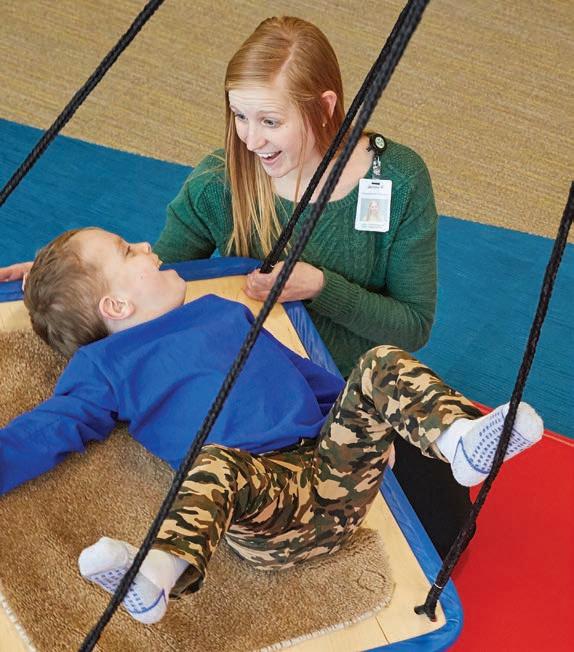
Parents with concerns about a child’s physical abilities or speech-language skills should see their child’s pediatrician or family medicine provider to discuss a possible referral to a pediatric therapist.
Speech-language therapy corrects speech and language disorders, and helps children who have difficulty eating, drinking, swallowing or controlling their lips, tongue and jaw muscles.
Occupational therapy addresses fine motor skills and self-care tasks such as feeding, dressing, teeth-brushing, sensory processing and visual skills such as hand-eye coordination.
Physical therapy improves a child’s gross motor skills, strength and balance, and corrects range-of-motion problems.
Now 7, Xander works on fine motor skills such as tying his shoes. His jaw strength is much improved and he keeps up with classmates on the playground. And boy, does Xander love to sing!
“He brings so much joy to his appointments,” says therapist Jenna. “Xander makes jokes with people in the waiting room and says hi to the receptionists and everyone he passes on his way into his session.”
TWO ‘MIRACLE BABIES’
Teresa and Trinity had a second child two years ago. Liberty, who is called Libby, was delivered five weeks early when Teresa had a stroke from a brain aneurysm that burst.
“Xander is the best big brother to Libby,” Teresa says. “He reads to her and is very protective.”
Teresa believes that without the care team at GRHS, Xander would be wheelchair-bound today instead of the boy who pedals a toy tractor at his grandpa’s house and rides a bicycle with training wheels.
LITTLE HERO
“Xander is a delight,” adds Trinity. “He’s small and a little behind developmentally, but he is wise beyond his years. He’ll surprise you with a crazy insight or a well-timed joke.”
The close family has nicknames for each other. Xander calls Teresa a giraffe because she looks over family members to make sure they’re OK. Trinity is a bear or a rock, and Libby is, well, the little sister. “I tell Xander that he’s the hero,” Teresa says. “He does everything now.”
Pediatric therapists Leah Seifert, MS, CCC-SLP, (left) and Jenna Knudtson, OTR/L, with some of the equipment used for children’s therapy. Xander Johnson, continued from page 1SPECIALIZED THERAPIES
Our rehabilitation therapists use a broad array of strategies and interventions to help patients recover from illness, injury and surgery. In this issue, we’re highlighting two unique rehabilitation services available at GRHS.

DYNAVISION D2
The Dynavision D2 is a board with 64 raised targets arrayed in five rings around a common center. The targets light up with variations in color, frequency and duration. In the center of the board, a screen intermittently displays numbers, letters, words, math problems or icons.
The patient’s job is to face the D2 board and touch each target as it lights up while also identifying the information that displays in the center screen. A therapist can adjust the difficulty of the patient’s task using the D2’s system software, as well as record each session to monitor changes in the patient’s speed and accuracy over time.

The Dynavision D2 can help patients return to basic daily activities, driving and athletics by addressing deficits in hand-eye coordination, attention, peripheral awareness, reaction time, cognitive processing time and vestibular function.
“It was originally designed to help athletes develop visual-motor skills, but it’s also valuable in helping people recover from traumatic brain injury, concussion, stroke, balance impairment and orthopedic injuries,” says occupational therapist Michelle Becker, OTR/L.
The Dynavision D2 is also useful for concussion testing and off-road driving assessments.
BLOCKED MILK DUCTS
You Won’t Find Everywhere
Milk ducts in breastfeeding women can become blocked due to overproduction of milk, pressure on breasts from clothing or bras, dehydration, a latch that doesn’t adequately empty milk from the breast, and even the weaning process. When a duct is blocked, the most common symptom is pain, tenderness and swelling that presents in a triangular shape in the affected breast.
“Don’t wait more than 48 hours before seeing your health care provider or urgent care if you have these symptoms,” says physical therapist Kelsey Nowak, PT, DPT. “A blocked milk duct can progress to an infection called mastitis, which requires immediate treatment.” Once mastitis or other complications have been addressed during an initial visit, patients may ask for a referral to physical therapy for blocked milk duct treatment.
During this appointment, the therapist will use an ultrasound wand to deliver deep heat and micromassage to the affected breast tissue. This helps
to open the blocked duct, increase circulation and encourage the movement of milk through the area. The therapist will also use her hands to express milk through the blocked duct.
The therapy appointment includes education on breast anatomy, positioning during breastfeeding, self-massage techniques, and pumping or feeding schedules. The therapist may also recommend the patient meet with a lactation specialist to correct any issues with the baby’s latch.
At the end of the therapy appointment, the patient will feed or pump to stimulate milk flow through the area that was blocked. Most patients will only need one therapy session.
GLENCOE NATIVE MAKES HER ‘COMEBACK’
When Lindsay Boesche, MPAS, PA-C, was 13, her mom was diagnosed with breast cancer. Twelve years later, her mom is cancer-free and, by no coincidence, Lindsay is a certified physician assistant starting her career in the GRHS internal medicine department.

LINDSAY BOESCHE, MPAS, PA-C
Lindsay knew from a young age that she wanted a health care career, but accompanying her mom to medical appointments sealed the deal. “After that, I wanted to be a person who could change someone’s life,” she says.
HOMETOWN ‘COMEBACK’
If Lindsay looks familiar, it’s because she grew up here. A Glencoe-Silver Lake High School graduate, Lindsay was awarded two Sanken-Hatz scholarships from the GRHS Foundation to help fund her education. She worked as a certified nursing assistant at GRHS before starting her physician assistant (PA) program. As a PA student, Lindsay completed clinical rotations at GRHS in both family medicine and internal medicine.
MEDICAL FOCUS
Today, Lindsay sees adult patients of Bryan Fritsch, DO, and Bryan Petersen, MD, for minor injuries, acute illnesses, post-ER and post-hospitalization follow-ups, re-checks following medication changes, management of chronic diseases and preventive care.
“With recommended screenings and other preventive measures, we can detect conditions and risk factors before they become major issues for patients,” she says.
LAKE FUN TO ICE TIME
Away from work, Lindsay enjoys reading, traveling and doing yoga. In summer, she often spends time lakeside. In winter, she enthusiastically cheers for the Minnesota Wild. Lindsay and her fiancé live in Watertown with their golden retriever puppy, Myles.
“This community supported me and helped me fulfill my dream.”
Now Open! Just What the Doctor Ordered HOSPITAL RENOVATIONS


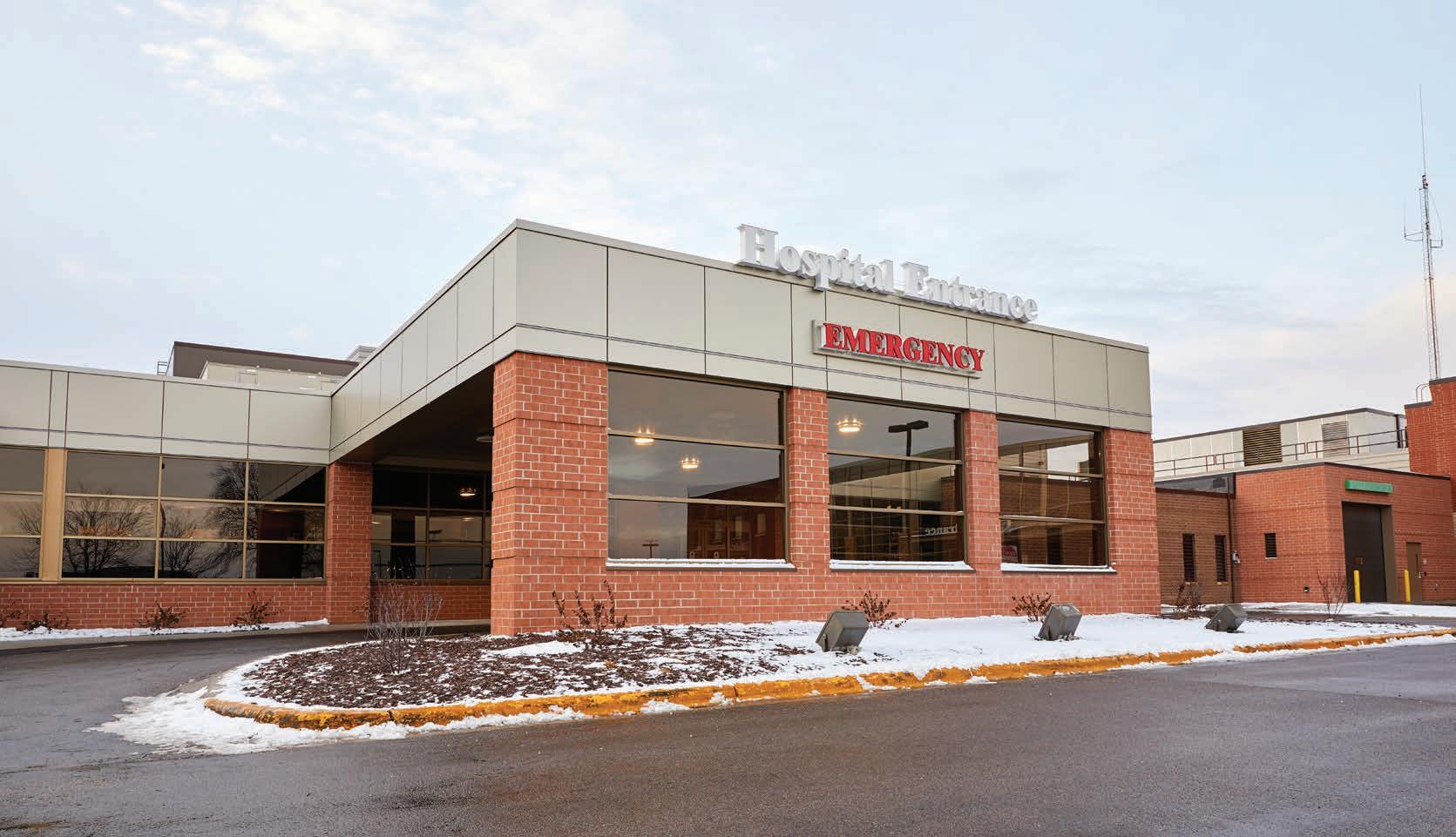
After 18 months of construction that affected nearly all of the first floor of our hospital in Glencoe, renovations are finally complete and all areas are open.
We undertook this project in order to create a more comfortable and private experience for our patients and visitors, and to improve the quality, safety and efficiency of the care we provide. Now that the dust has settled, we’re proud to give you a peek at some of our new spaces. Visit


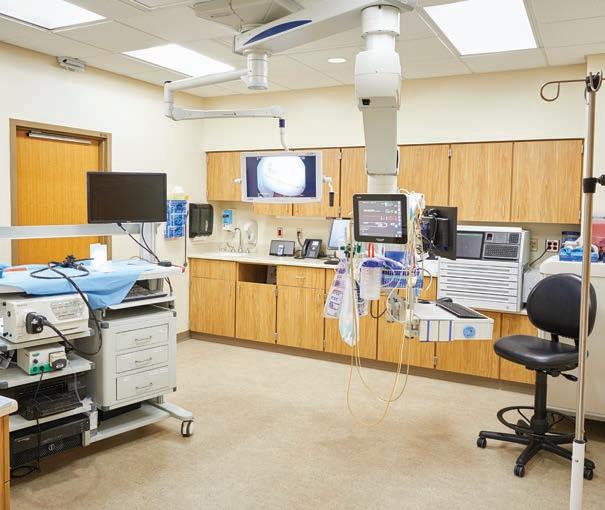

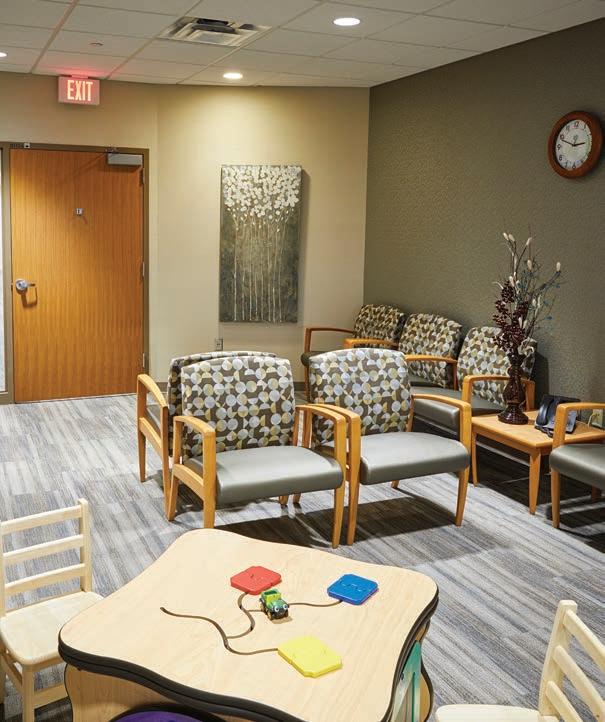
 A new, larger endoscopy suite and surgical procedure room were added during the hospital renovation.
A new, larger endoscopy suite and surgical procedure room were added during the hospital renovation.
GRHS recently became a certified health care home. A health care home is not a place, but a new approach in which the patient and a team of medical professionals work together to improve the patient’s results of care and quality of life.
Our certification means the Minnesota Department of Health has verified that all GRHS clinic patients receive care that meets certain standards. It also means we’re able to provide patients who have chronic or complex conditions with care coordination services through a health care home program
“The program takes the health care home concept up a notch for patients with more significant health issues,” says Kristin Schultz, RN, clinic nurse coordinator. “It provides them with an expert who brings everyone involved in the patient’s care together, coordinates services, offers education and support, and lets them know they’re not alone.”
HOW DOES IT WORK?
Patients who enroll in the health care home program are assigned a care coordinator. This person is a registered nurse whose role is to help with
DESIGNATION FAST
HEALTH CARE HOME
communication between the patient’s care providers and coordinate referrals to other medical specialists or community services that may benefit the patient.
The care coordinator acts as a go-between person to ensure the patient’s care plan is understood and supported by each member of the care team, the patient, and the patient’s family members, too.
GRHS’ care coordinators are Alyssa Nornes, RN, and Michelle Eggers, RN. Both have special training in chronic disease management. Their office is on our Glencoe campus, but they work with patients from all three GRHS clinic locations.
COORDINATION AND SUPPORT
The health care home program looks at the patient’s whole being, not just one condition or facet of health. The care coordinators help patients better understand and manage all of their health conditions. They support their patients in setting and reaching personal goals, too.
“With help from a care coordinator, patients are better able to advocate for themselves and navigate the health care system,” says Alyssa.
We recently applied to renew our designation as an Acute Stroke-Ready Hospital. It certifies that GRHS is equipped to evaluate, stabilize and provide life-saving emergency care to patients with stroke symptoms. GRHS has been designated by the Minnesota Department of Health since the program began in 2014.
“Our commitment to meeting these standards ensures that GRHS patients receive the best stroke care possible,” said Mandy Sturges, RN, emergency and infusion services manager.

A stroke happens when blood flow to a part of the brain is suddenly reduced or cut off by a blockage or tear in a blood vessel. Without immediate treatment, brain cells will die from lack of oxygen and functions controlled by the affected area of the brain – such as memory, speech or muscle control – may be lost.
To achieve the stroke-ready designation, GRHS developed a protocol, or standardized plan, for treating stroke patients. It includes a dedicated team with specialized training that is available to respond whenever a patient has stroke symptoms, 24 hours a day, seven days per week.

“We can confirm a stroke diagnosis and start treatment with clot-busting medication in less
Who Should Enroll?
The health care home program is recommended for patients who:
• See more than one health care provider, and
• Have one or more of the following conditions:
- Asthma; - Chronic obstructive pulmonary disease (COPD); - Depression; - Diabetes;
- Heart failure; and/or
• Are at high risk for hospitalization or emergency room visits.
To learn more or enroll, visit grhsonline.org/health-care-home or call (320) 864-3121
than an hour,” said James Jessen, MD, emergency room physician. “Every minute counts when we’re trying to preserve brain cells.”
The team receives ongoing education to stay current with best practices in stroke care. In addition, the GRHS Stroke Committee meets every three months to review all stroke cases and identify opportunities for improvement in our response or treatment.
When seeing symptoms of
stroke, act FAST
Facial drooping
Arm weakness
Slurred speech
Time to call 9-1-1
Other symptoms of stroke:
Sudden difficulty seeing Dizziness or loss of balance
• Sudden severe headache with no known cause
• Numbness of the face, arm or leg
Sudden confusion
means we act
FOR STROKE PATIENTS
Long Term Care
Step into the atrium at GRHS Long Term Care. Here, you’ll find our residents gathered around a puzzle or watching colorful birds flit back and forth in the aviary. You’ll find our staff, always ready with a helping hand or a friendly smile. Just steps away, you’ll find our volunteers calling out numbers during bingo or chatting with residents.
Just outside the atrium, you’ll find a banner with five yellow stars that represent the rating given to GRHS Long Term Care by the U.S. Centers for Medicare & Medicaid Services (CMS). CMS rates nursing homes on a scale of one to five stars based on health inspection results, staffing levels and performance on quality measures. GRHS Long Term Care has consistently achieved 5-star ratings.
In addition to its five-star rating from CMS, GRHS Long Term Care was also recognized recently as a Top-Performing Nursing Home by U.S. News and World Report. Only 15 percent of facilities evaluated by U.S. News achieve Top-Performing status, which is awarded to nursing homes that receive a rating of 4.5 or higher. GRHS Long Term Care scored a 4.9 in U.S. News’ most recent rating period.

“We strive to ensure that we’re not only providing our residents with the best care possible, but making sure this feels like home to them,” says Julie Schmidt, vice president of long term care and ancillary services. “Being recognized by CMS and U.S. News is encouraging and gratifying.”
We recently installed new mammography equipment with digital breast tomosynthesis (DBT) capabilities.
In the DBT technique, X-rays of the breast are taken from many angles and then reconstructed to create a 3-D image. This enables the radiologist who reads the exam to view very thin sections of tissue individually and find small cancers that would have been obscured by normal tissue in
a two-dimensional (2-D) mammogram. The 3-D imaging technique is particularly effective for women who have dense breast tissue.
Studies have shown that 3-D mammography detects 20 to 65 percent more invasive breast cancers and reduces the number of patients who are called back for additional breast cancer screening exams by up to 40 percent when compared with 2-D mammography alone.
“There is no difference between a 2-D and a 3-D mammogram in terms of the length of the exam or the patient’s experience,” said Heather Ott, RT, (R) (M) (CT) (MR), director of medical imaging. “The difference is in the results.”
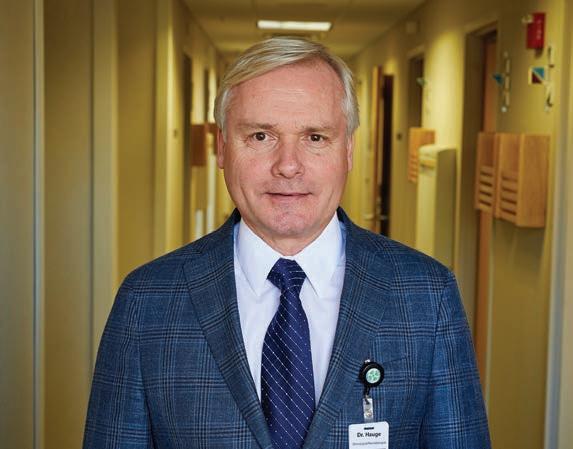
Many major insurance plans, including Medicare, cover 3-D mammograms. However, we recommend that patients confirm their coverage before choosing the 3-D mammogram.

Care & Services Health Talks
MEDICAL SPECIALTIES
Audiology
Cardiology
Emergency Medicine
Family Medicine
General Surgery
Hematology
Hospitalists
Internal Medicine
Midwife Services
Nephrology
Neurology
Obstetrics and Gynecology
Oncology
Orthopedics
Otolaryngology (ENT)
Pediatrics
Podiatry
Pulmonology
Urology
MEDICAL SERVICES
Acute Care Unit
Ambulance
Anticoagulation Clinic
Best Beginnings Birth Center
Cardiac Rehabilitation
Diabetes Education
Emergency Room
Flu Vaccinations
Infusion Services
Laboratory
Medical Imaging
Occupational Therapy
Physical Therapy
Respiratory Therapy
Sleep Study Clinic
Speech-Language Therapy
Transitional Care
Urgent Care
Vascular Consultations
Ventilator Care and Liberation
Wound Care
SKILLED NURSING CARE
Nursing Home
INDEPENDENT SENIOR LIVING
Orchard Estates
from the
President & CEO
by Jon D. Braband, FACHEMEDICARE ANNUAL WELLNESS VISITS
Dr. Kristine Knudten, Family Medicine
DATE: Monday, April 30
TIME: 6:30 – 7:30 pm
PLACE: GRHS conference rooms
Please use the hospital entrance at 1805 Hennepin Ave N., Glencoe.
Although there is no charge to attend a health talk event, we ask that you reserve a seat online at grhsonline.org/health-talks or by calling 320-864-7146 or 1-888-526-4242, ext. 7146
MyChart
GET CONNECTED WITH MYCHART
MyChart provides a convenient way for you to view portions of your medical record, receive test results, send messages to your provider and even schedule appointments.
Ask the receptionist or nurse to help you sign up at your next clinic appointment or hospital visit. Or go to grhsonline.org/mychart to download a sign-up form that you can complete and submit by mail or fax.
For assistance, call MyChart Services toll free at 1-855-551-6555 from 8 am to 8 pm, Monday through Friday.
STUDENTS, LEARN THIS:
Scholarship applications are due March 31
Sanken-Hatz scholarships will be awarded to qualified high-school seniors and post-secondary students who will be enrolled during the 2018-2019 academic year in approved programs for:
Certified Nurse Practitioner Dentist (and Pre-Dentistry)
Dental Hygienist
Medical, Surgical or Medical Laboratory Technician
Nuclear Medicine Technician
Occupational, Speech or Respiratory Therapist
Paramedic
Pharmacist or Pharmacy Technician
Physical Therapist or Physical Therapy Assistant
Physician (and Pre-Medicine)
Physician Assistant
Radiologic or Ultrasound Technologist
Registered Nurse or Licensed
Practical Nurse
at grhsonline.org/scholarships APPLY NOW!
Visit grhsonline.org/scholarships to review eligibility rules and download an application packet. Complete the documents and mail to the address shown. Applications are not complete until we receive the applicant’s most recent official transcript and applicant appraisal forms from two references. All materials must be postmarked no later than March 31, 2018
Rehabilitation, renovation, recertification, recognition. The themes in this issue of Touching Lives convey a sense of renewal. I couldn’t pick a better word to describe Glencoe Regional Health Services right now. We’re committed to our community – as always – and will never stop growing and improving as we seek to meet your evolving needs.
For example, we’ve just redone the entire first floor of our hospital to enhance your experience when you come for care or just to visit. (Read about it on page 4 and 5.) We’ve added new services and upgraded our technology so you can get great care and even better results (See pages 3, 6 and 7.) We’ve recruited new providers to make it easy and convenient for you to get the care you need. (Turn back to pages 3 and 7.)
Now that you’ve reached the back page, perhaps you’ve also noticed that Touching Lives itself has been redesigned. Our community newsletter sports a fresh, modern, streamlined look that complements our new mobile-friendly website, grhsonline.org. I hope you enjoy them both.
Lastly, I have one more re- word to share with you, and it’s a personal one: retirement. You may have heard that I’ve made plans to step down as president and CEO of GRHS in July. There will be plenty of time between now and then to reflect on my 25 years in this position, but I will say that it has been an honor and a privilege to work with our staff and community board members. Efforts to recruit a new CEO are underway, and I will keep you posted on them.

